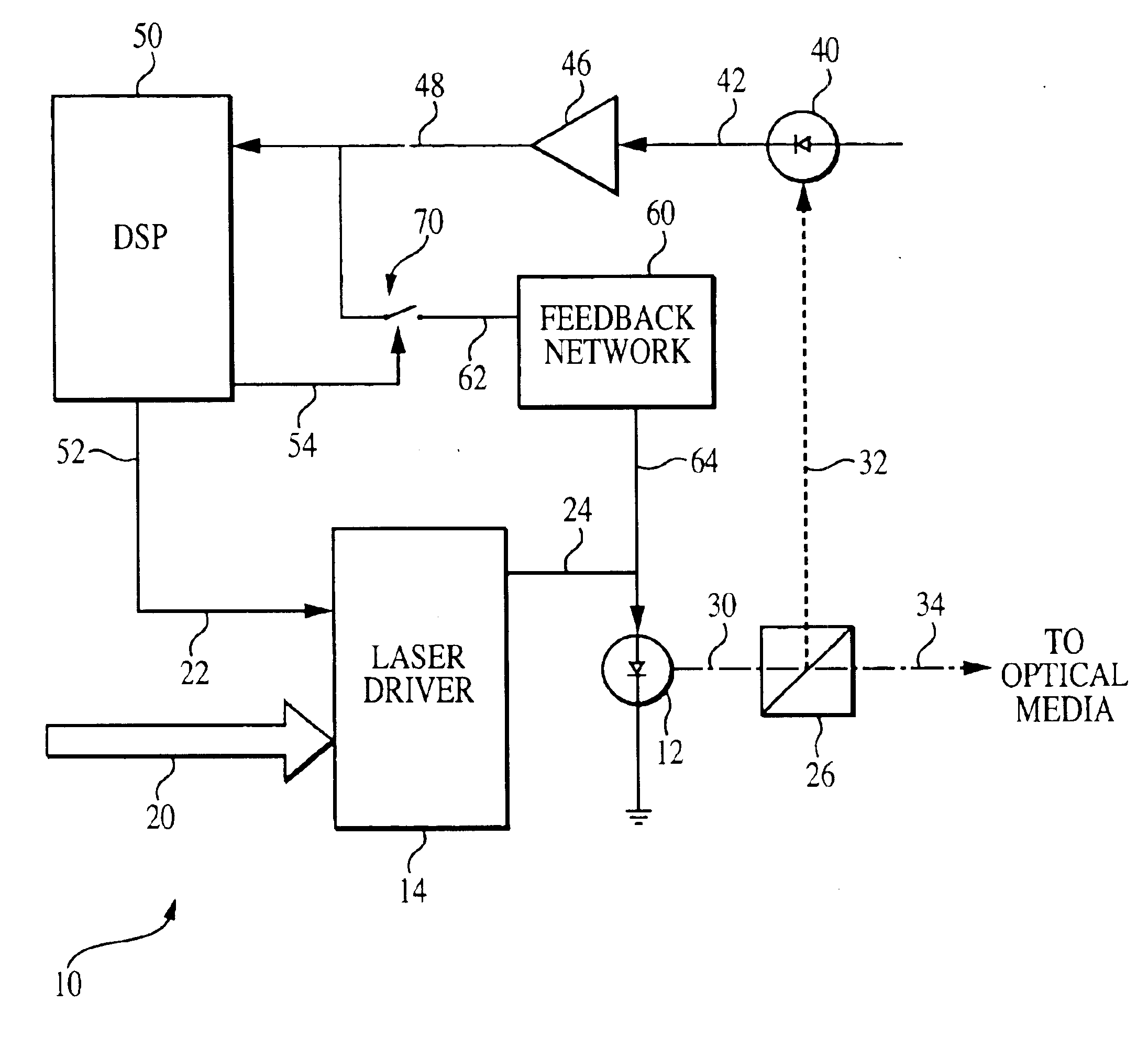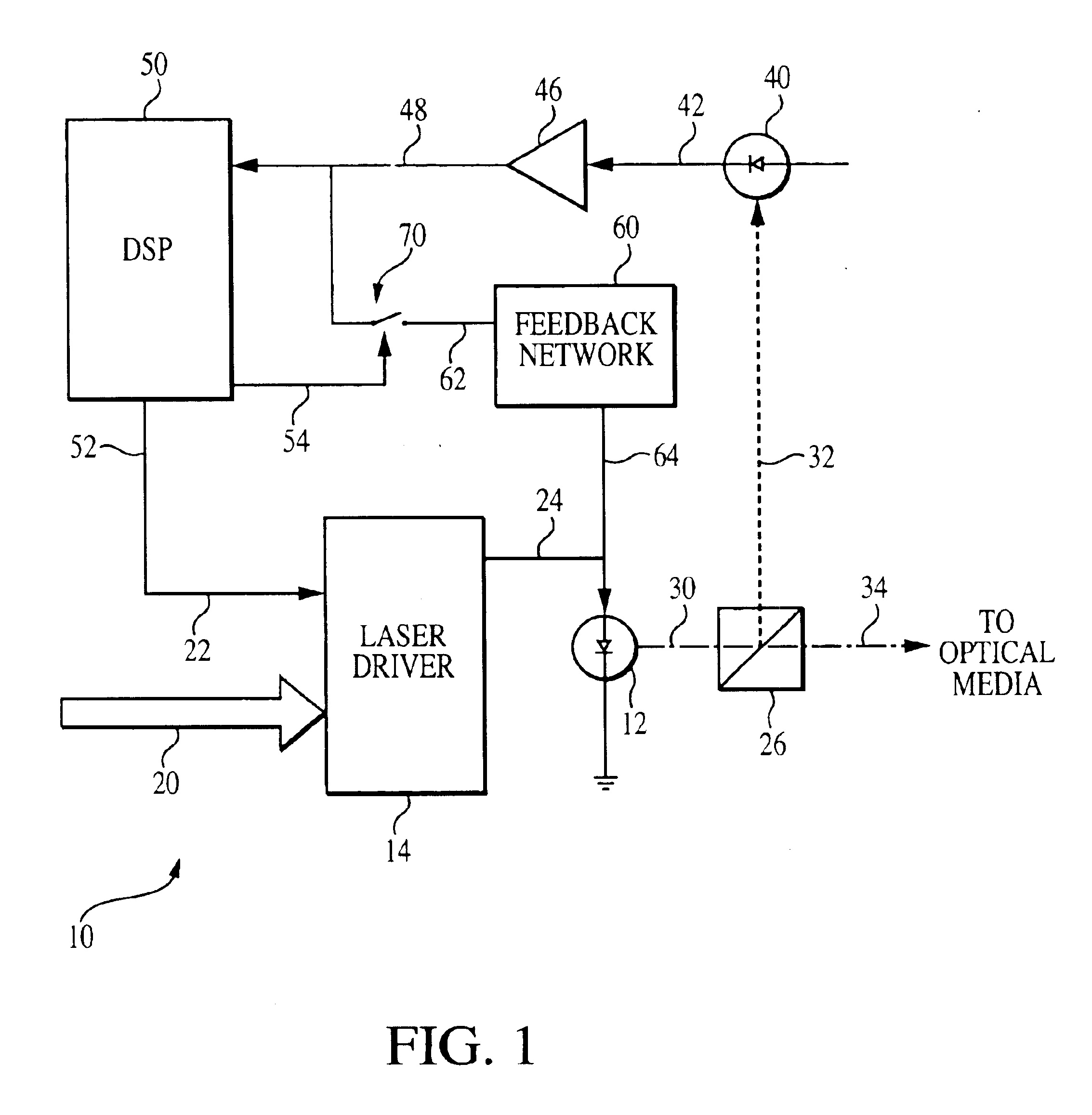Laser driver with noise reduction feedback for optical storage applications
a technology of optical storage and laser driver, which is applied in the direction of semiconductor lasers, laser details, electrical apparatus, etc., can solve the problems of affecting the density achievable on the storage media, affecting the integrity of data, and limiting the density of optics and lasers, so as to minimize the noise created by the laser driver circuit itself, the noise reduction effect is also minimized
- Summary
- Abstract
- Description
- Claims
- Application Information
AI Technical Summary
Benefits of technology
Problems solved by technology
Method used
Image
Examples
Embodiment Construction
[0038]Referring to FIG. 1, there shown a schematic diagram illustrating the preferred embodiment of the low noise laser control system 10 of the present invention. As described and illustrated below, laser control system 10 is used in an optical data storage system. It is certainly contemplated that this control system 10 could easily be used with other devices that require noise free operation of a laser.
[0039]As with all optical data storage systems, a laser 12 is utilized to generate light signals for reading and writing operations. Laser 12 is controlled by a laser driver 14, which has a write control signal input 20 and a read power input 22. Both of these inputs control the output signal generated at laser driver output 24. Laser driver output 24 is directly attached to laser 14 in order to generate the desired optical signals. The laser driver of the preferred embodiment is a commercially available Elantec EL6287C laser driver manufactured and sold by Elantec Semiconductor, I...
PUM
 Login to View More
Login to View More Abstract
Description
Claims
Application Information
 Login to View More
Login to View More - R&D
- Intellectual Property
- Life Sciences
- Materials
- Tech Scout
- Unparalleled Data Quality
- Higher Quality Content
- 60% Fewer Hallucinations
Browse by: Latest US Patents, China's latest patents, Technical Efficacy Thesaurus, Application Domain, Technology Topic, Popular Technical Reports.
© 2025 PatSnap. All rights reserved.Legal|Privacy policy|Modern Slavery Act Transparency Statement|Sitemap|About US| Contact US: help@patsnap.com



